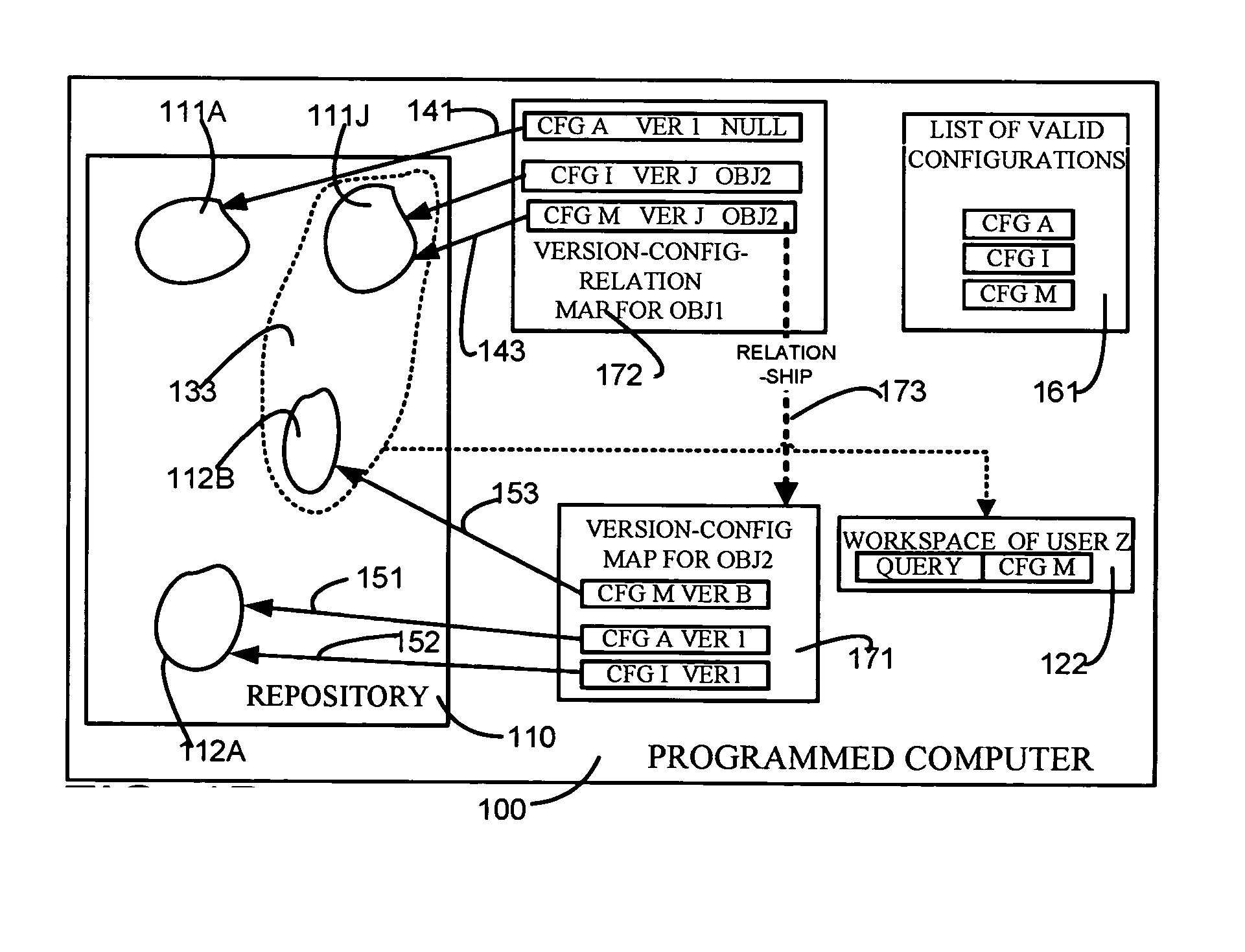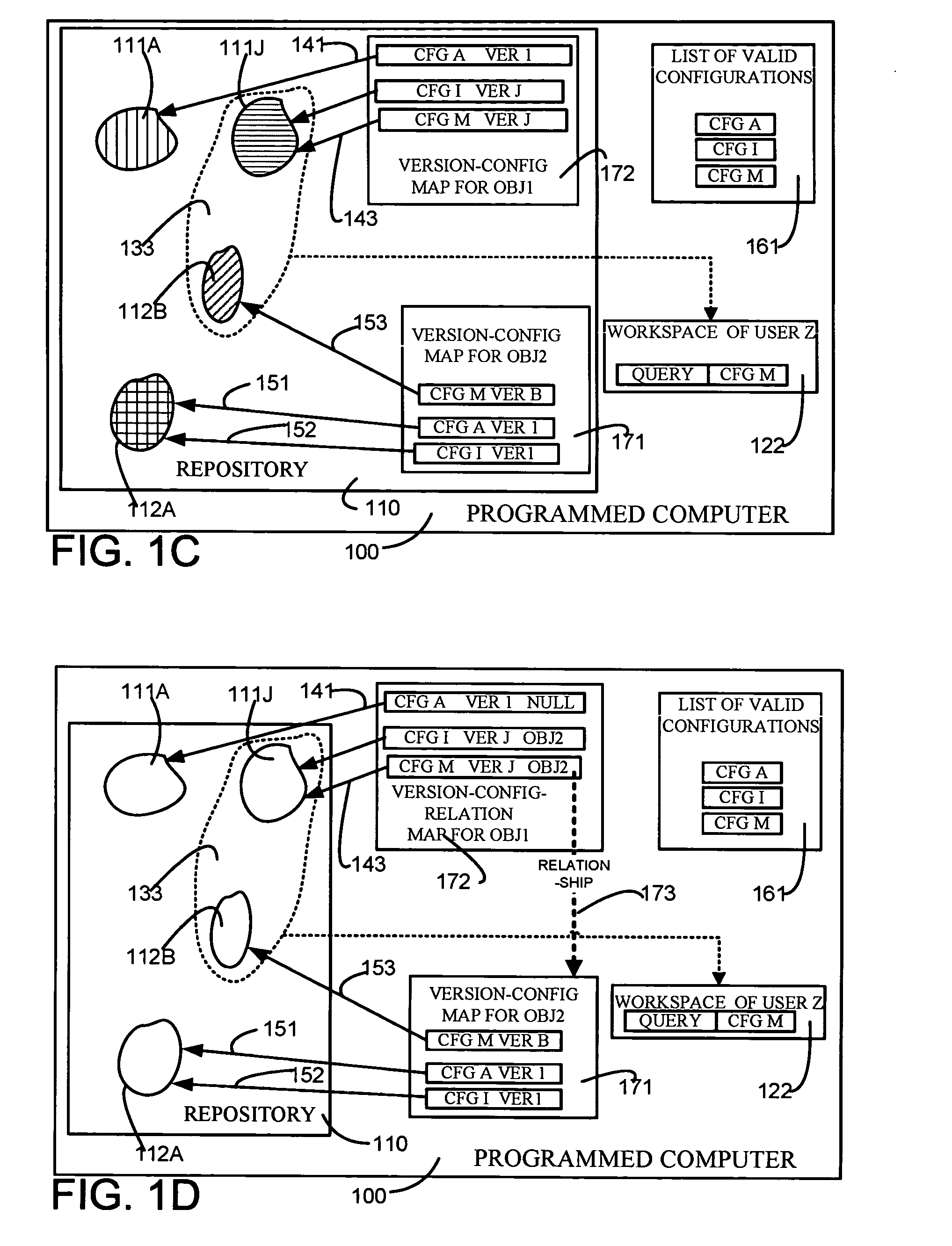Object versioning
- Summary
- Abstract
- Description
- Claims
- Application Information
AI Technical Summary
Benefits of technology
Problems solved by technology
Method used
Image
Examples
Embodiment Construction
[0035] A computer 100 (FIG. 1A) is programmed in accordance with the invention to maintain a repository 110 that contains multiple versions of an object. For example, an object called “OBJ1” is shown in FIG. 1A as having two versions, namely version 1 (labeled as item 111A in FIG. 1A) and version 2 (labeled as item 111J in FIG. 1A). Normally, when a query is made to repository 110, repository 110 returns both versions (i.e. version 1 and version 2) of the single object OBJ1 in response to the query. However, computer 100 is programmed to supply only a single version, e.g. version 1 only or version 2 only, depending on a configuration that is received with the query. For example, when processing a query from workspace 121, computer 100 uses an identifier, namely a configuration CFG A and the identity of a responsive object OBJ1, with a mapping 172 for OBJ1 (which is a mapping between versions of OBJ1 and configurations to which they belong) to uniquely identify (as illustrated by arr...
PUM
 Login to View More
Login to View More Abstract
Description
Claims
Application Information
 Login to View More
Login to View More - R&D
- Intellectual Property
- Life Sciences
- Materials
- Tech Scout
- Unparalleled Data Quality
- Higher Quality Content
- 60% Fewer Hallucinations
Browse by: Latest US Patents, China's latest patents, Technical Efficacy Thesaurus, Application Domain, Technology Topic, Popular Technical Reports.
© 2025 PatSnap. All rights reserved.Legal|Privacy policy|Modern Slavery Act Transparency Statement|Sitemap|About US| Contact US: help@patsnap.com



